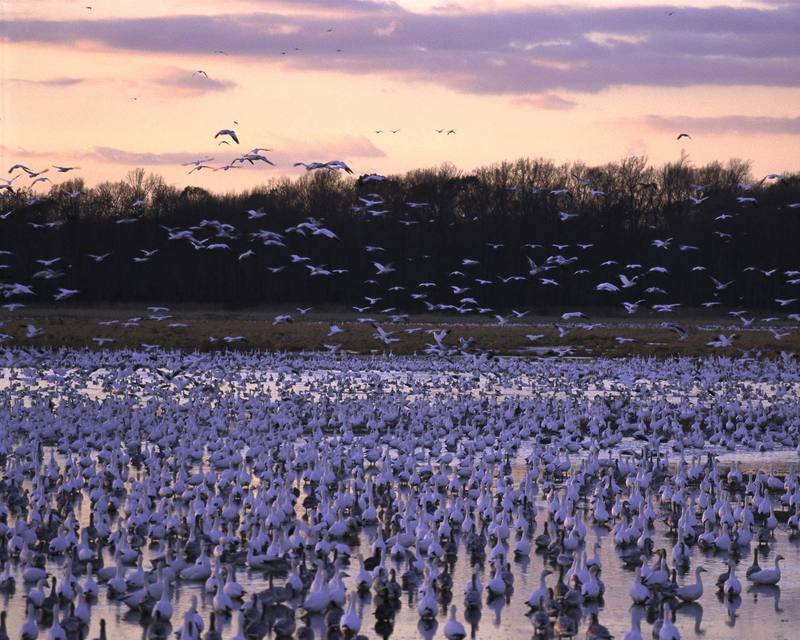|
| Query: Fox | Result: 1298th of 1537 | |
Snow Goose flock (Chen caerulescens) <!--흰기러기-->
| Subject: | Snow Goose flock (Chen caerulescens)
| | Poster: | Phoby (phoby@hanafos.com)
| |

| Resolution: 3000x2400 File Size: 1021282 Bytes Date: 2004:12:07 16:34:25 Upload Date: 2004:12:07 16:29:09 |
From the U.S. Fish and Wildlife Service's online digital media library.
Check http://images.fws.gov/ for higher quality version.
Metadata
Title: Bombay Hook National Wildlife Refuge, Delaware
Alternative Title: Chen caerulescens
Creator: Richie, Jamie
Source: WV-9369-Centennial CD
Publisher: U.S. Fish and Wildlife Service
Contributor: NATIONAL CONSERVATION TRAINING CENTER-PUBLICATIONS AND TRAINING MATERIALS
Language: EN - ENGLISH
Rights: (public domain)
Audience: (general)
Subject: Snow geese flying waterfowl
Description
Abstract: Bombay Hook NWR, Smyrna, Delaware: The story of Bombay Hook National Wildlife Refuge is a story of waterfowl--hundreds of thousands of ducks and geese arriving in the fall to rest and feed before heading further south or to winter over. The flocks of snow geese have been compared to the herds of wildebeest on Africa's Serengeti. No less impressive are the Canada geese, pintails, gadwalls, and teal. But the story doesn't end with waterfowl. In spring, millions of ancient horseshoe crabs come ashore to lay their eggs, providing food for tens of thousands of shorebirds: red knots, ruddy turnstones, semi-palmated sandpipers, and black-bellied plovers. And in the fall, one may find a flock of 250 dainty avocets with their slender up-curved bills and rusty heads and necks. Bald eagles nest here and can often be seen soaring above or fishing in the tidal flats. Diamondback terrapins, once near extinction, lay their eggs here. Mammals include white-tailed deer, foxes, muskrats, beavers, and river otters. And there are all manner of colorful songbirds--blue grossbeaks, scarlet tanagers, prothonotary warblers, and orchard orioles, to name just a few. Enjoy the 12-mile auto-tour route, hiking trails, and observation/photography towers. But be sure to bring the insect repellent, especially on spring and summer visits.
Date Available: May 10 2004
Issued: November 05 2002
Modified: May 10 2004
The snow goose (Chen caerulescens), consisting of both a white phase and blue phase (Blue Goose), is a North American species of goose commonly collectively referred to as "light geese". Its name derives from the typically white plumage.
|
Comments |
|---|
| | Guest |
|
| Snow Goose (Chen caerulescens) is a North American species of goose. Its name derives from the typically white plumage. The genus of this bird is disputed. The American Ornithologists' Union and BirdLife International for example place this species and the other two "white" geese in Chen, while some other authorities place it in the more traditional "grey" goose genus Anser. |
^o^
Animal Pictures Archive for smart phones
^o^
|
|
|

